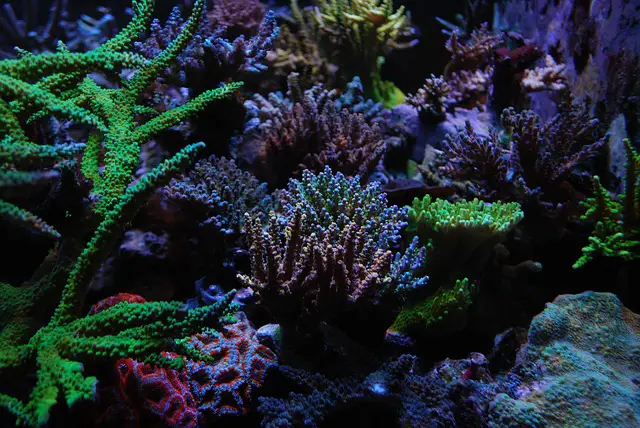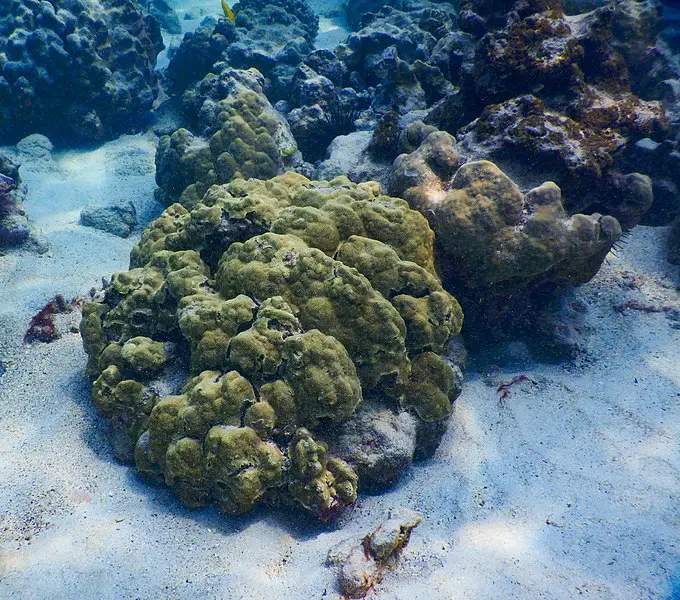Adding corals to your aquarium is, possibly, one of the most fun parts of owning a reef tank.
You can start adding the corals as soon as the water temperature and salinity are just right; cycling the aquarium would be beneficial, but is not necessary. If you have enough time, you might want to wait for the algae blooms to clear up (it might take a few months though).
How exactly can you introduce the coral to the tank and how many can you add at once? You are about to find out.
When to Add Corals to New Tank?
There is no single answer to the question as, at times, you might be able to add the corals in just 2 weeks, while in some cases it can take up to a year.
The exact timeframe would depend on the following factors:
- The nitrogen cycle
The cycle begins when fish waste and decaying food start producing ammonia. The latter should get converted into a less harmful substance before you decide on adding corals.
The nitrates and nitrites are the things that the ammonia gets converted into. They can be used by the aquarium’s bacteria and plants to produce healthy oxygen and food for the beautiful corals.
- Algae blooms
Algae will usually start growing in the tank once the nitrogen cycle is complete. It is a natural process that leads to the creation of a mature ecosystem.
Ideally, you would want to add corals to the tank once the algae blooms had cleared up – this indicates that the ecosystem is now nurturing enough.
- Stable tank parameters
This is, perhaps, the most important factor that you would have to take into consideration. Make sure that the water temperature is between 70 F and 80 F, salinity levels – 1.023-1.025 SG, nitrate – less than 5 ppm, ammonia – 0 ppm, pH – between 8.1 and 8.4.
When it comes to the algae blooms and the water parameters – there are certain corals that can thrive even with algae blooms around and that can tolerate swinging parameters. The corals won’t necessarily get damaged by ammonia as well, so some experts advocate placing the specimens in the tank as soon as the temperature and salinity are at the right levels.
How Do I Introduce Coral to My Tank?
- Pick the right coral. For example, soft corals (‘softies’) are amazing for those who are just getting started; those include Leathers, Mushrooms, Xenia, Polyps, Zoanthids, and Palythoas.
- Turn the aquarium lights off. The chances are high that the corals have been in complete darkness for the last day or so. You should turn off the lights to avoid placing even more stress on the beauties.
- Test the tank’s water quality. Make sure that there is no ammonia and that the nitrate and nitrite levels are appropriate.
- Empty the containers with the corals into a larger tub.
- Add half a cup of aquarium water into the tub every few minutes. Try to add the water as slowly as possible, but do bear in mind that the whole acclimation cannot take longer than 30 minutes as the corals will start suffering once the temperature drops.
- To go the extra mile, you can use a pest control dip. This will help eliminate the risk of various parasites getting transferred into your tank.
- Release the coral into the tank . Make sure to find the right location for the specimen – the light and flow levels should be just right.
Do Corals Need a Cycled Tank?
You might choose not to cycle the aquarium at all. There is no evidence that corals have to be added only to a cycled tank.
Ammonia can be toxic to a lot of living organisms because it destroys the hemoglobin in the blood cells. But corals do not have hemoglobin that carries oxygen.
Of course, extremely high levels of ammonia are toxic for all organisms – they can end up destroying the creatures’ cells. But the chances are high that your aquarium does not have such concertation of the deadly substance.
So, if you really do need to add the corals to the tank, then you can do that without cycling the aquarium.
With that being said, if you have the necessary time, experts recommend cycling the aquarium before introducing new inhabitants. The corals are certainly going to feel a bit better in a cycled tank as the nitrogen cycle helps replicate the conditions of the coral’s natural habitat.
How Often Can You Add Corals?
You can actually add up to 40 corals at once. Of course, you can choose to start with only a few or a single one, but even a beginner might be able to manage a few dozens of corals. Taking the tank conditions and water parameters into consideration is a must though.
Corals produce a lot less bioload than fish, for example, which makes it possible to add plenty of those at once. Bioload is the waste that is produced by the living creatures in the tank, and if you have a lot of fish, then nitrogen cycling might be required (but that’s not the case with corals). That’s exactly why you can add quite a few corals at once and not wait for too long before adding the next specimens.
Hint: you might want to run carbon if you are opting for leather corals – these ones can produce toxins.
However, when it comes to aquariums, patience is the thing that will help you become a proud owner of a breathtakingly beautiful reef tank. If you can give each coral enough time to acclimate, then you should definitely do that.
Learn more about each coral and monitor its behavior – how the specimen reacts to the light conditions and the flow and how it’s getting along with the rest of the inhabitants.
Final Thoughts
When to add corals to new tank?
Frankly speaking, you can do that literally straight away. It would be more beneficial for the corals if you cycled the tank, but the specimens will be able to survive in an uncycled aquarium as well.
Simply make sure that the water parameters are right and you’re good to go.


